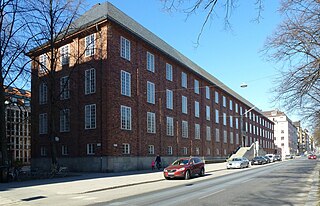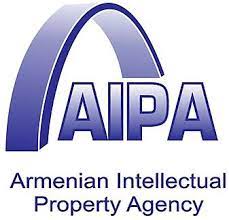
The World Intellectual Property Organization is one of the 15 specialized agencies of the United Nations (UN). Pursuant to the 1967 Convention Establishing the World Intellectual Property Organization, WIPO was created to promote and protect intellectual property (IP) across the world by cooperating with countries as well as international organizations. It began operations on 26 April 1970 when the convention entered into force. The current Director General is Singaporean Daren Tang, former head of the Intellectual Property Office of Singapore, who began his term on 1 October 2020.

An industrial design right is an intellectual property right that protects the visual design of objects that are purely utilitarian. An industrial design consists of the creation of a shape, configuration or composition of pattern or color, or combination of pattern and color in three-dimensional form containing aesthetic value. An industrial design can be a two- or three-dimensional pattern used to produce a product, industrial commodity or handicraft.
The Patent Cooperation Treaty (PCT) is an international patent law treaty, concluded in 1970. It provides a unified procedure for filing patent applications to protect inventions in each of its contracting states. A patent application filed under the PCT is called an international application, or PCT application.
In patent law, industrial design law, and trademark law, a priority right or right of priority is a time-limited right, triggered by the first filing of an application for a patent, an industrial design or a trademark respectively. The priority right allows the claimant to file a subsequent application in another country for the same invention, design, or trademark effective as of the date of filing the first application. When filing the subsequent application, the applicant must claim the priority of the first application in order to make use of the right of priority. The right of priority belongs to the applicant or his successor in title.

Industrial property is one of two subsets of intellectual property, it takes a range of forms, including patents for inventions, industrial designs, trademarks, service marks, layout-designs of integrated circuits, commercial names and designations, geographical indications and protection against unfair competition. In some cases, aspects of intellectual creation, although present, are less clearly defined. The object of industrial property consists of signs conveying information, in particular to consumers, regarding products and services offered on the market. Protection is directed against unauthorized use of such signs that could mislead consumers, and against misleading practices in general.
A divisional patent application, also called divisional application or simply divisional, is a type of patent application that contains subject-matter from a previously filed application, the previously filed application being its parent application. While a divisional application is filed later than the parent application, it retains its parent's filing date, and will generally claim the same priority. Divisional applications are generally used in cases where the parent application may lack unity of invention; that is, the parent application describes more than one invention and the applicant is required to split the parent into one or more divisional applications each claiming only a single invention. The ability to file divisional applications in cases of lack of unity of invention is required by Article 4G of the Paris Convention.
The Budapest Treaty on the International Recognition of the Deposit of Microorganisms for the Purposes of Patent Procedure, or Budapest Treaty, is an international treaty signed in Budapest, Hungary, on April 28, 1977. It entered into force on August 19, 1980, and was later amended on September 26, 1980. The treaty is administered by the World Intellectual Property Organization (WIPO).

A utility model is a patent-like intellectual property right to protect inventions. This type of right is available in many countries but, notably, not in the United States, United Kingdom or Canada. Although a utility model is similar to a patent, it is generally cheaper to obtain and maintain, has a shorter term, shorter grant lag, and less stringent patentability requirements. In some countries, it is only available for inventions in certain fields of technology and/or only for products. Utility models can be described as second-class patents.
Intellectual property law in Romania has developed significantly in the period since the Romanian Revolution of 1989 because of the need to enforce various regional and international treaties and agreements, such as the Agreement on Trade-Related Aspects of Intellectual Property Rights (TRIPS), the European Directives on Biotechnological Inventions, on Trademarks and Geographical Indications, and on Supplementary protection certificates, the Trademark Law Treaty, the Patent Law Treaty, and the European Union regulation on the Community Trademark, and the need to harmonize domestic patent law with the European Patent Convention (EPC) and with the European Union.
Republic Act No. 8293, otherwise known as the Intellectual Property Code of the Philippines, defines a trademark as “any visible sign capable of distinguishing goods”. Early jurisprudence has taken it to mean “a sign, device or mark by which the articles produced or dealt in by a particular person or organization are distinguished or distinguishable from those produced or dealt in by others, and must be affixed to goods or articles”.
A patent application is a request pending at a patent office for the grant of a patent for an invention described in the patent specification and a set of one or more claims stated in a formal document, including necessary official forms and related correspondence. It is the combination of the document and its processing within the administrative and legal framework of the patent office.
This is a list of legal terms relating to patents and patent law. A patent is not a right to practice or use the invention claimed therein, but a territorial right to exclude others from commercially exploiting the invention, granted to an inventor or their successor in rights in exchange to a public disclosure of the invention.
The United International Bureaux for the Protection of Intellectual Property (BIRPI) was an international organization. It was set up in 1893 to administer the Berne Convention for the Protection of Literary and Artistic Works and the Paris Convention for the Protection of Industrial Property. The BIRPI is the predecessor of the World Intellectual Property Organization (WIPO).

The Swedish Intellectual Property Office, formerly the National [Swedish] Patent and Registration Office, is a Swedish government agency based in Stockholm and Söderhamn in charge of patents, trademarks and industrial designs. The Office acts as Patent Cooperation Treaty (PCT) authority, i.e. International Searching Authority (ISA) and International Preliminary Examining Authority (IPEA). Peter Strömbäck is the current Director General of the Office.
World Intellectual Property Indicators (WIPI) is an annual statistical report published by the World Intellectual Property Organization (WIPO). The publication provides an overview of the activity in the areas of patents, utility models, trademarks, industrial designs, microorganisms, plant variety protection, geographical indications and the creative economy.

Iran is a member of the WIPO since 2001 and has acceded to several WIPO intellectual property treaties. Iran joined the Convention for the Protection of Industrial Property in 1959. In December 2003 Iran became a party to the Madrid Agreement and the Madrid Protocol for the International Registration of Marks. In 2005 Iran joined the Lisbon Agreement for the Protection of Appellations of Origin and their International Registration, which ensures the protection of geographical names associated with products. As at February 2008 Iran had yet to accede to The Hague Agreement for the Protection of Industrial Designs.
Republic Act No. 8293, otherwise known as The Intellectual Property Code of the Philippines lays down the rules and regulations that grant, and enforce patents in the Philippines. Patents may be granted to technical solutions such as an inventions, machines, devices, processes, or an improvement of any of the foregoing. The technical solution must be novel, innovative, and industrially useful. In order for a technical solution to be granted a patent, the inventor must file an application to the Bureau of Patents, which will examine, and in some cases, grant its approval. The law is designed as to foster domestic creativity, to attract foreign investors, and to motivate inventors to release their products for public access.

The Intellectual Property Agency of Armenia (AIPA) is the patent office of Armenia. The agency works under the supervision of the Ministry of Economy of Armenia and is tasked with granting patent and IP address protections, trademarks, and copyrights for objects of industrial property, inventions and usage patterns, industrial design, and commercial and service marks, among others.
Intellectual property of Ethiopia is managed by the Ethiopian Intellectual Property Office (EIFO), who oversees Intellectual Property Right (IPR) issues. Ethiopia has not signed IPR treaty such as the Paris Convention for the Protection of Industrial Property, the World Intellectual Property Organization (WIPO) copyright treaty, the Berne Convention for Literary and Artistic Works, the Madrid System for the International Registration of Marks, and the Patent Cooperation Treaty.





